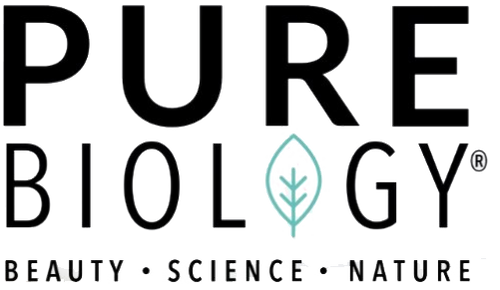Hyperpigmentation happens when the skin produces extra melanin – a pigment that gives the skin color that can leave uneven dark spots. Hyperpigmentation is commonly caused by acne and UV rays. However, there are other reasons for your hyperpigmentation. We listed below the common causes of hyperpigmentation and ways for you to prevent and fight uneven dark spots. Let’s take you on your journey of feeling confident with your own skin. Read the article below.
What Causes Hyperpigmentation
#1 Skin Injuries and inflammation
Post inflammation from acne, eczema, allergies, dermatitis, burn, and other skin injuries can leave a dark brown pigment on the skin. This is often seen after picking an active acne as a result of skin trauma. The body can sometimes produce excess melanin in order to repair the damaged skin resulting in a dark pigmented spot. Next time you see a pimple, stop your urge to prick it if you don’t want an annoying dark pimple mark to take its place of the healed acne.
#2 Sun exposure
When the skin is exposed to too much sunlight and UV rays, it triggers an increase in melanin production. Although melanin is called a natural sunscreen due to its sun-protecting benefits, an overproduction of it and too much sun exposure can cause hyperpigmentation and premature skin aging. Studies have suggested that lighter skin types are more prone and have more chances of catching solar lentigines, liver spots, or sunspots. It is, therefore, recommended to use sunscreen every day especially if you are under the scorching sun.
#3 Melasma or hormonal changes due to pregnancy
Hyperpigmentation is quite common in pregnant women and is said to be related to the increase of estrogen and progesterone that triggers an overproduction of melanin. Melasma or often called “mask of pregnancy” are dark splotchy marks that often can be seen on the forehead, cheeks, nose, and lips. This dark pigment can develop during pregnancy due to hormonal changes that alter the balanced production of melanin. This can be heightened by sun exposure and often runs in the family.
#4 Products that cause irritation
Some products are not suitable for all skin types and can cause irritation and hyperpigmentation when used. This is the reason a patch test is always recommended before trying on new products. Such products are not only limited to harsh skincare but also to hair products that can cause irritation and allergies. Some irritants in the ingredients of the products you use can cause an inflammatory reaction that can lead to hyperpigmentation.
#5 Medication
Phototoxic drugs and medication can also be a cause of hyperpigmentation. Some of these are non-steroidal anti-inflammatory drugs (NSAIDs), tetracyclines, antipsychotics, phenytoin or anticonvulsants, and some birth control pills.
How To Fight Hyperpigmentation
Over the counter whitening creams and ingredients that can help reduce the appearance of hyperpigmentation. Here are some of the things you should be looking for:
#1 Retinol
Retinol is probably the most talked about ingredient in the skincare community for its skin cell regeneration properties that can help fade dark spots and hyperpigmentation. Go for Pure Biology Retinol Cream that contains Retinol, Hyaluronic Acid, and Vitamins B C and E. Apply it in the morning or in the evening consistently to see a reduction of dark spots and wrinkles.
#2 Niacinamide
Niacinamide or Vitamin B3 is also a fantastic ingredient for evening skin tone and reducing hyperpigmentation on skin. According to a 2002 clinical study about the effect of niacinamide on reducing cutaneous pigmentation and suppression of melanosome transfer, there is a significant decrease of hyperpigmentation for people who used niacinamide after 4 weeks.
#3 Vitamin C
Vitamin C is known to hinder the production of melanin and over time can reduce the appearance of hyperpigmentation from sunspots, melasma, and age spots. Choose Pure Biology Vitamin C serum with hyaluronic acid and witch hazel for a healthy glow.
#4 Kojic acid
Kojic acid is a bleaching agent that can help lighten dark marks and even out complexion. Although the result will not be immediate, a continued use of up to three months can show promising results in fading hyperpigmentation.
#5 Hydroquinone
Just like kojic acid, hydroquinone is also a skin-lightening agent that bleaches the skin. This OTC product decreases the production of melanin and effectively lightens liver spots, melasma, and dark spots. However, this product cannot be used longer than 6 months and should not be mixed with benzoyl peroxide. Check out this article about What Skincare Ingredients Can and Can't Mix to know more what product is safe to mix with.
Tips to Prevent Hyperpigmentation
- Use sunscreen everyday
- Avoid direct sunlight
- Don’t pick on acne, scabs, or bug bites
- Ask a dermatologist for treatment
Sources:
Massinde, A., Ntubika, S., & Magoma, M. (2011). Extensive hyperpigmentation during pregnancy: a case report. Journal of medical case reports, 5, 464. https://doi.org/10.1186/1752-1947-5-464
Drug-induced skin pigmentation | DermNet NZ. (2022). Dermnetnz.org. https://dermnetnz.org/topics/drug-induced-hyperpigmentation
Hakozaki, T., Minwalla, L., Zhuang, J., Chhoa, M., Matsubara, A., Miyamoto, K., Greatens, A., Hillebrand, G. G., Bissett, D. L., & Boissy, R. E. (2002). The effect of niacinamide on reducing cutaneous pigmentation and suppression of melanosome transfer. The British journal of dermatology, 147(1), 20–31. https://doi.org/10.1046/j.1365-2133.2002.04834.x
Related Articles:
